Below are the questions.

2003PPq1q7 (0 min to 2.42 min) Ans: Option A

2023PPp1q4 (2.47 min 3.54 min) Ans: Option C

2018PPp1q2 (3.45 min to 6.22 min) Ans: Option D

2011PPp1q6, 2016PPp1q6 (6.22 min) Ans: Option A

Below are some examples of questions that involve finding the resultant force due to two or three forces.


2010PPp1q2 similar to 2002PPp1q7 (0s to 3.02 min) Ans: Option D and D respectively
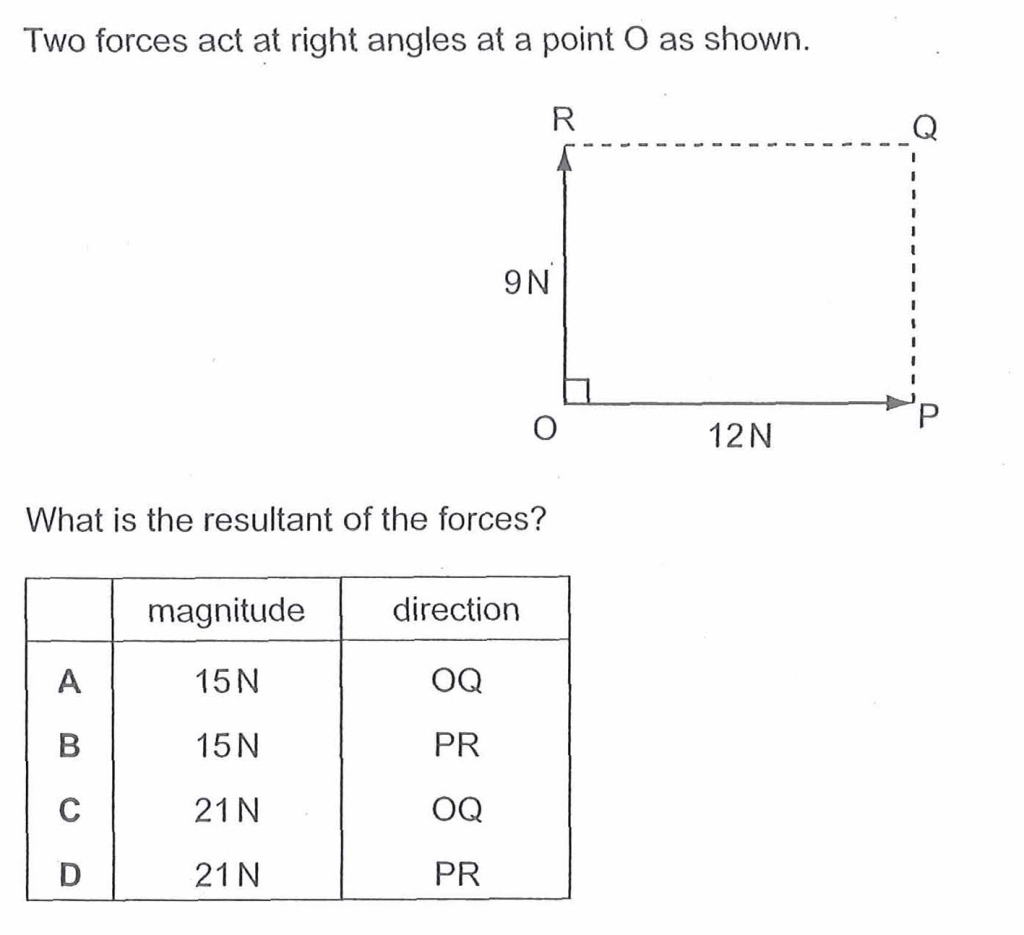
2005PPp1q10, 2012SPp1q1, 2018PPp1q2 (4.25 min to 6.40 min) ANs: Option A
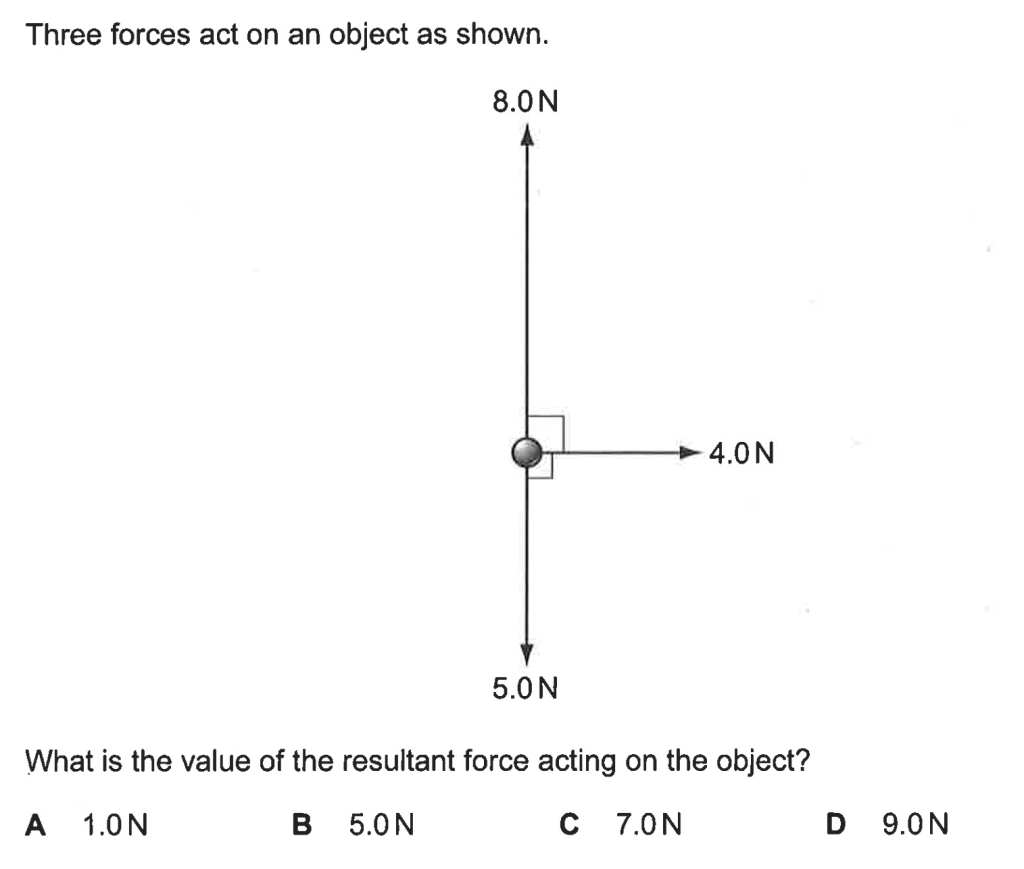
2014PPp1q8 (6.40 min to 7.48 min) Ans: Option B
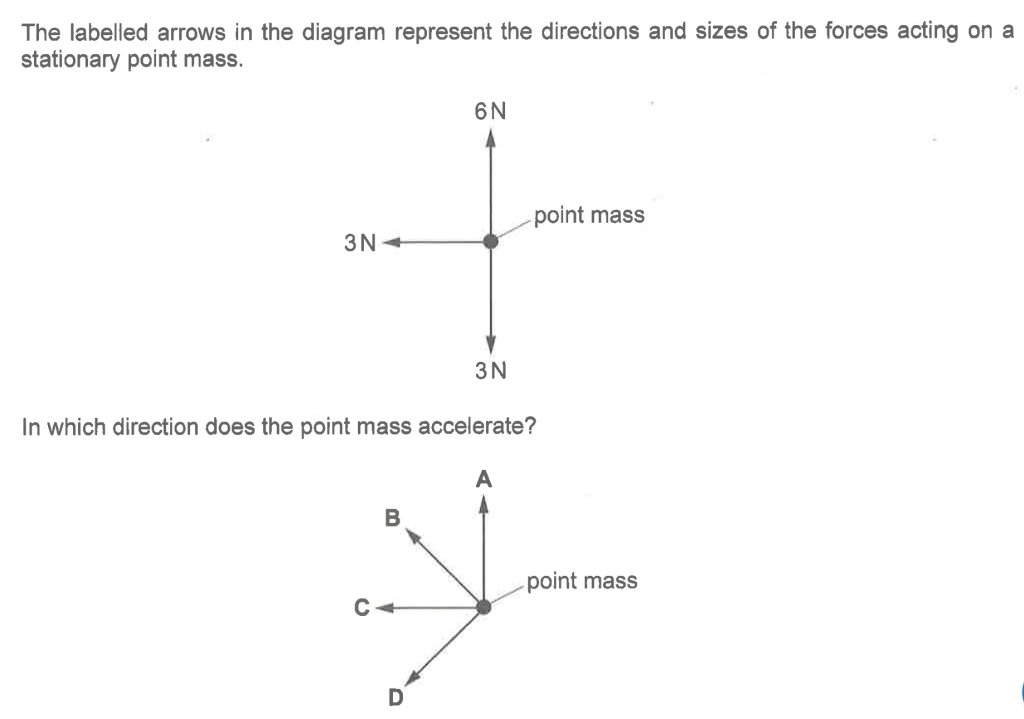
2019PPp1q2 (7.48 min to 8.22 min) Ans: Option B
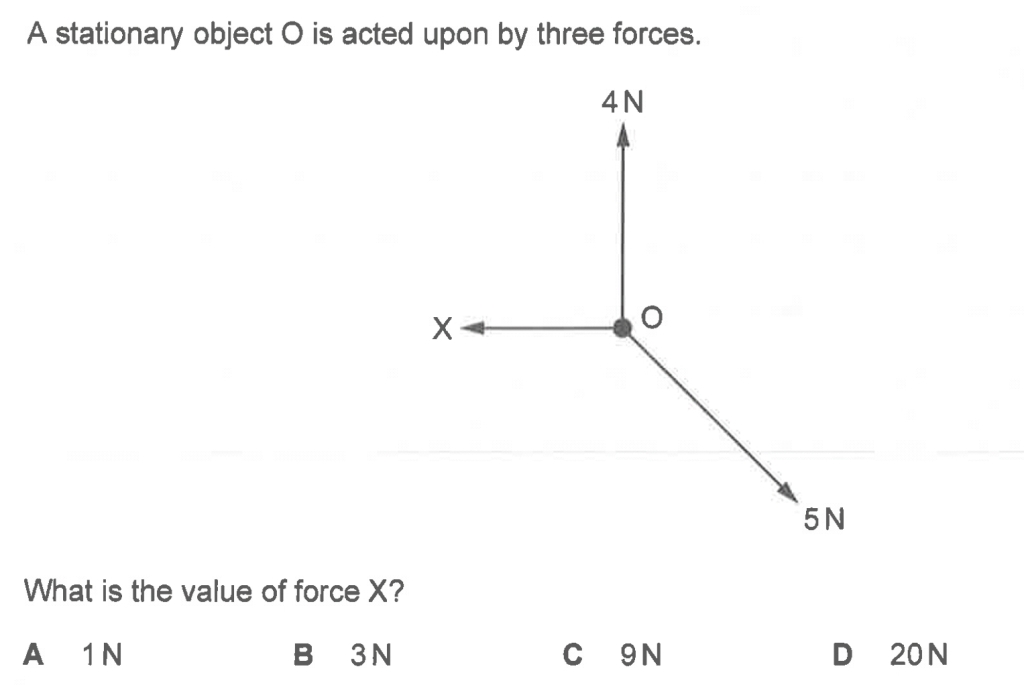
2020PPq1q3 (8.22 min to end) Ans: Option B

There have been a few questions in Olevel asking students the direction of the friction on the wheel, It is important to consider if the wheel is connected to the engine or not.
Below is an illustration on this concept.

You can view the explanation plus the 4 examples from Olevel p1 in the video below.
Examples




Refer to the video above for the answers
Most of us know that when the treads of our typical car tyres are worn out, we need to change as to provide grip, hence our car will not skid easily.
But actually, the treads of our typical car serve a more important role during rainy days. They allow the water to be displaced (quickly letting the water to move into the treads) so that the tyres can still maintain contact with the road to provide the grip. Of course, if you still go too fast on a wet road, that layer of water may not be able to be displaced in time, hence grip on the road is greatly reduced and the car is likely to skid.
Especially in the recent F1 race in Singapore, due to the wet weather, the cars had to changed to hard wet tyres. Many may be puzzled why F1 cars uses smooth slick tyres during dry weather, contrary to our common sense for our typical cars. The graphic below hopes to provide some basic explanation to the wet and dry tyre and the function of the tread on tyre. Hope it helps.

The following video gives a good overview of how a tyre works. There is a lot of science behind them.
For these type of questions, it is important to identify which tyre/wheel is connected/powered by the engine or the person.
On each tyre or wheel, there are actually two types of frictional force.

Examples:




Try these two questions. The phrase ‘the wheel is driven/connected to the engine’ is important actually. Hopefully you will know how to solve them!


This post was updated following the first astronauts launched by SpaceX returned home safely on 3 Aug 2020.


SpaceX’s Crew Dragon heat shield shown off after first orbital-velocity reentry
How do spacecraft re-enter the Earth? | HowStuffWorks
Why Is It So Difficult For A Returning Spacecraft To Re-Enter Our Atmosphere?
Returning from Space: Re-entry – PDF format
SpaceX In-Flight Abort Test
SpaceX Falcon Heavy- Elon Musk’s Engineering Masterpiece
Shuttle Atlantis STS-132 – Amazing Shuttle Launch Experience
How to Land the Space Shuttle… from Space
First astronauts launched by SpaceX return to earth (3 Aug 2020)

Refer to this MCQ from PurePhysics 2015P1Q6

1) Newton’s first law states that an object will remain at rest or in uniform motion (constant speed) in a straight line unless an external force acts on the body.
In other words, when a body is at rest or moving at constant speed in a straight line (constant velocity), straight away you should know it is Newton’s first law. Next you must know these 3 basics concepts about 1st law:
– forces acting on the body are balanced
– net force / resultant force acting on the body is zero
– there is no acceleration.
2) Newton’s second law states that when a net force (resultant force) acts on a body, it will cause an acceleration on the body (accelerating or decelerating).
Basically F = ma where F is the net or resultant force in N,
m is the mass in kg
a is the acceleration in ms-2
In other words, when a body is moving faster or slower (or going round a bend), you should know its Newton’s second law. Next you must know these 3 basic concepts about 2nd law:
– forces acting on the body are not balanced
– there is a net force / resultant force acting on the body
– there is an acceleration (accelerating of net force is in the direction of motion, or decelerating if the net force is opposite to the direction of motion)



In a typical parachute jump, there are various distinct stages/sections as you can see from the graph in the video below.
AB = constant acceleration, free fall, a = 10 ms-2
BC = decreasing acceleration
CD = constant speed, zero acceleration
at D = the time where the parachute is fully opened
DE = constant deceleration
EF = lower constant speed, zero acceleration
FG = constant deceleration
After you have learned Dynamics, you should be able to explain each stage using forces acting on the skydiver, namely the weight and air resistance.
Refer to the video below to understand the motion at various stages and how to explain in terms of forces, esp the part on why the acceleration is decreasing during BC.
You can refer to the detailed explanation in words in the comics below. Hope this post helps you to understand better!

by evantoh
On earth, the gravitational field strength is 10 N/kg and the acceleration due to gravity is 10 ms-2.
That means when you release an object from you hand, the object will fall with increasing speed. The acceleration is a constant 10 ms-2 (acceleration due to gravity). Simply put, it means in 1 second, the speed of the object will increase by 10 m/s.

In general, if there is no air resistance or air resistance is negligible, the speed-time graph is a straight line with constant gradient and passes through origin, i.e. speed is directly proportional to the time.
If there is air resistance, there is a maximum constant speed if the object continues to fall. Hence the graph is different.
More importantly, remember that any object that you released on earth, whether there is air resistance or no air resistance, the initial acceleration when it is released is always a constant 10 ms-2!
Refer to the video for the explanation and some examples.

Jet Suit Flight and Talk by Richard Browning
Setting Record
Real Ironman
Another kind of jet suit by another company

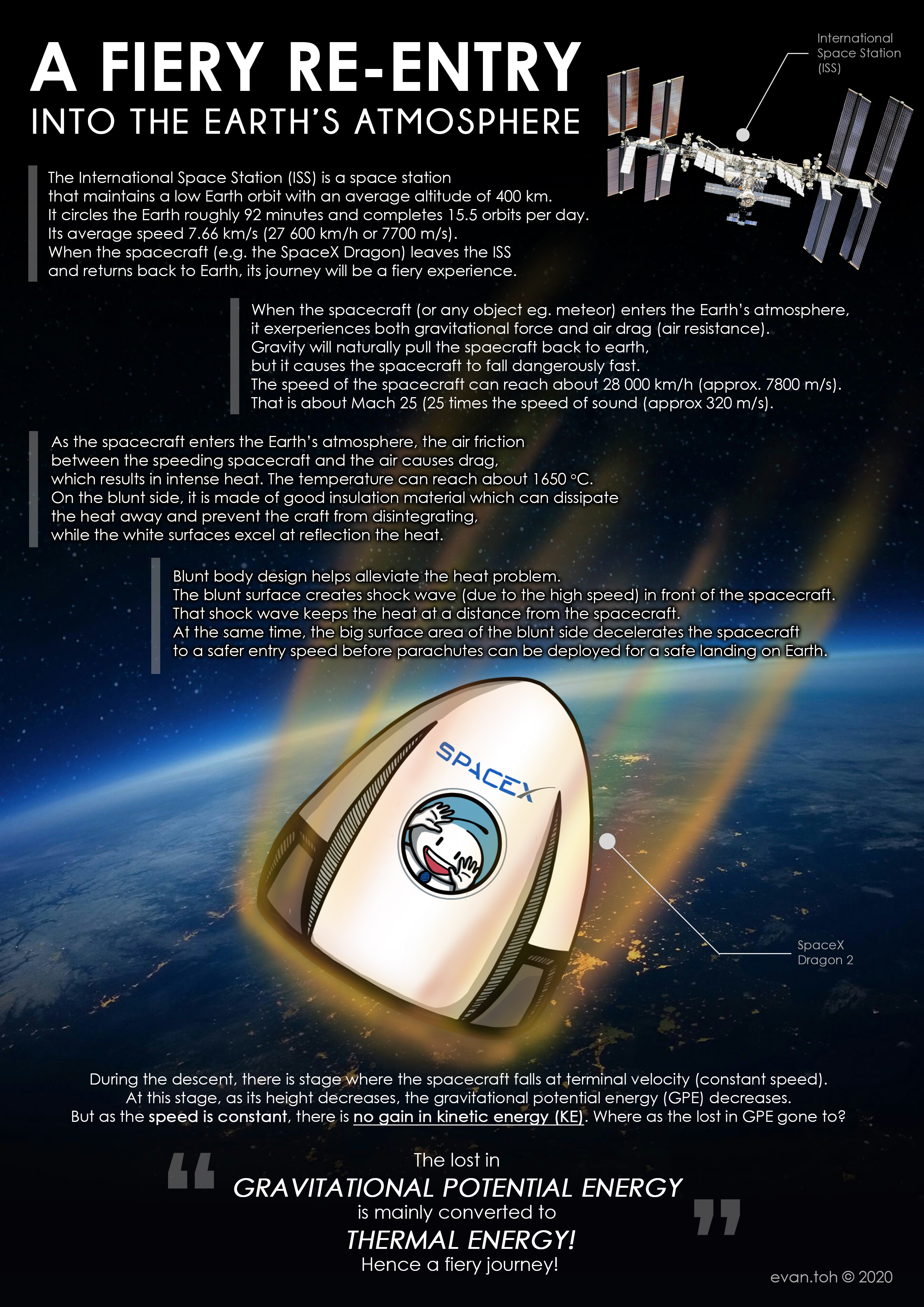
SpaceX’s Crew Dragon heat shield shown off after first orbital-velocity reentry
How do spacecraft re-enter the Earth? | HowStuffWorks
Why Is It So Difficult For A Returning Spacecraft To Re-Enter Our Atmosphere?
Returning from Space: Re-entry – PDF format
SpaceX In-Flight Abort Test
SpaceX Falcon Heavy- Elon Musk’s Engineering Masterpiece
Shuttle Atlantis STS-132 – Amazing Shuttle Launch Experience
How to Land the Space Shuttle… from Space
In this post, it shows a free-falling ball from a height of 1.0 m. During the impact, the direction of the force on the ground is downwards and the force on the ground by the ball is greater then the weight.
As the ball is free-falling, the only force acting is its weight downwards. Hence a common misconception is to think that the force on the ground during impact is equal to the weight. This is wrong.
The normal force (force on the ball by the ground = stopping force on the ball by the ground) is greater than the weight.
The force on the ball by the ground is equal and opposite to the force on the ground by the ball. Hence the magnitude of the force on the ground is greater than the weight.
Similar concept can be applied if a man jumps off from a height. But in this case, the man’s leg will exert a stopping force over a short distance. That stopping force, once again, is greater than the weight of the man.
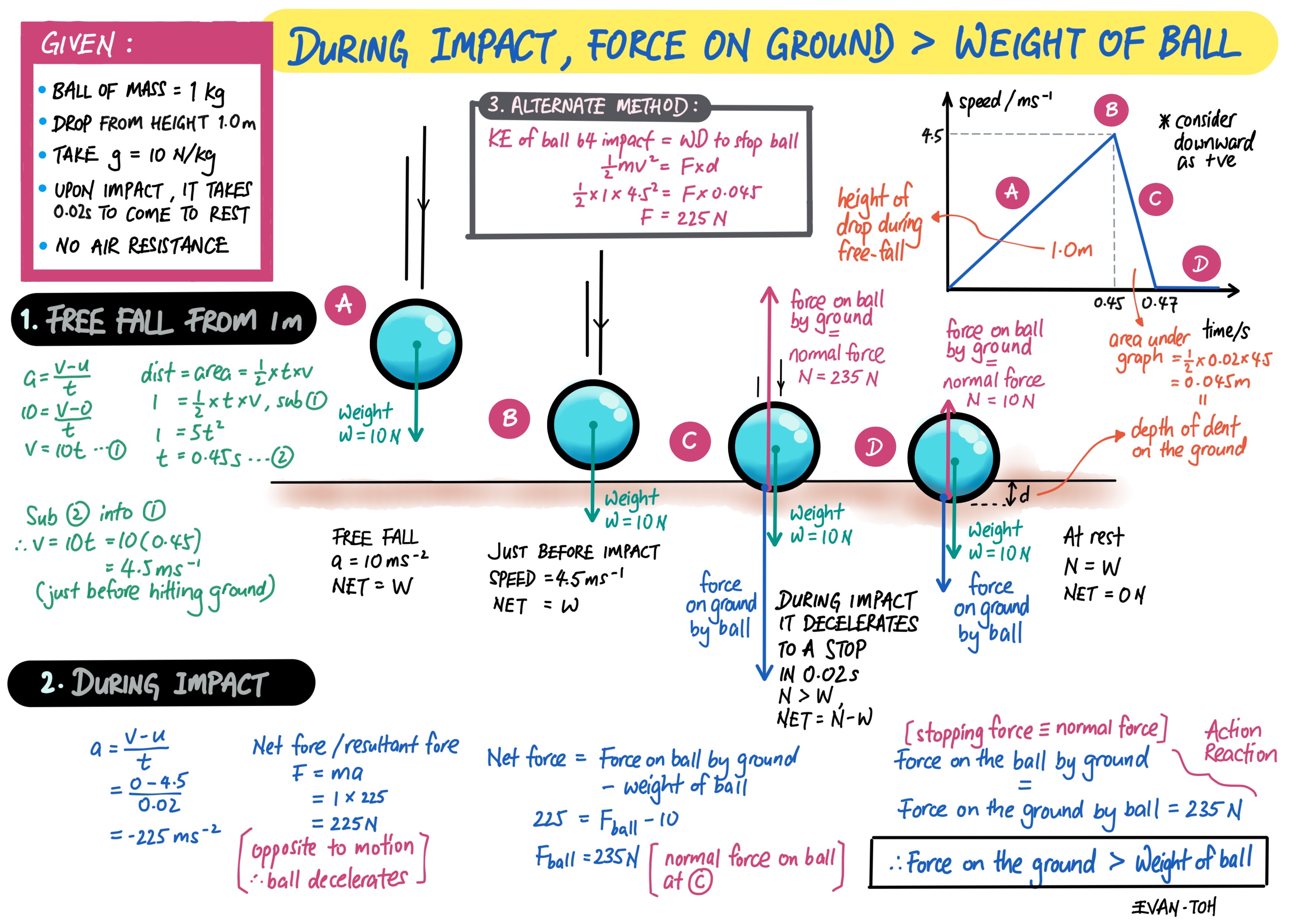
This concept is similar to a 2016 O-Level Pure Physics Question P2 Q2, on why the pressure acting on the ground is greater during the jump, compared to when he is standing stationary on the ground.
During the jump, his leg will exert an upward force. This upward force (equivalent to normal force or force on the man by the ground) is greater than the weight of the man. Hence there is a net (resultant force) upwards, causing him to accelerate upwards.
That force on the man by the ground is equal and opposite to the force on the ground by the man. This is an action-reaction pair. Since the force exerted on the ground by the man is greater (greater than weight), the pressure exerted on the floor is greater.
(NOTE: Normal force and Weight is not an action-reaction pair)






Answer: Option A
Refer to the video tutorial for the explanation.

Answer: Option A
Refer to the video tutorial below for explanation.
This impressive Bugatti Chiron can accelerate from rest to 400 km/h and decelerate to a complete stop in merely 42 seconds! Our normal cars on the expressway travel about 90 km/h and the F1 race yesterday night is about 300 km/h. This Bugatti Chiron is faster than most bullet trains and comparable to the speed of a magnetic levitation train!
 https://www.bugatti.com/chiron
https://www.bugatti.com/chiron
Before we look at the video, let’s do some calculations:

Let’s find the acceleration of the car to reach 400 km/h in 32.6 sec:
Converting 400 km/h to m/s: 400km/1h = 400 000m/3600s =111 m/s
acceleration, a = (v – u)/t = (111 – 0) / 32.6 = 3.4 m/s2
hmmm…. this acceleration doesn’t seem impressive… it is way below free fall acceleration!
But we are not being fair here. To achieve the max speed of 400 km/h is not easy due to the resistive force (air resistance and friction) as speed increases. We should compare fairly the acceleration to reach 100 km/h instead like how we typically compare sports car like Ferrari etc.
Let’s find the acceleration of the car to reach 100 km/h (27.8 m/s) in 2.4 sec:
acceleration, a = (v – u)/t = (27.8 – 0) / 2.4 = 11.6 m/s2
This is greater than acceleration due to gravity (free fall) and much faster than most sports cars in the market like Ferrari or Lamborghini!
Now, let’s find the deceleration of the car when it slows down from 400 km/h to a complete stop in 41.9 – 32.6 = 9.36 s
acceleration, a = (v – u)/t = (0 – 111) / 9.36 = -11.9 m/s2
Take note of the spoiler being activated when it decelerates. This increases the drag (air resistance) to slow down the car, in addition to using the normal brakes. It is the same principle as the aeroplane when it lands and slows down on the runway.
For Combined Science Physics Olevel, when constructing vector diagram, a method called Parallelogram Method is commonly used.
Parallelogram Method is used when 2 forces are known, and the resultant (net) force R, can be found.
Below show 5 different variations of questions when can be solved by using Parallelogram Method:
(A) Body has acceleration, forces are unbalanced, there is a resultant force R (Newton’s 2nd law)
(B) Body at rest, all forces are balanced, there is no resultant force R (Newton’s 1st law)
(C) Body moving at constant velocity, all forces are balanced, there is no resultant force (Newton’s 1st law)
(D) Finding unknown force (with resultant force R + another known force are given)
(F) Vector diagram is applicable to all vector quantities (with magnitude and direction). Not just for forces.
Click here to view video tutorials on how to construct parallelogram step-by-step




For Pure Physics, another method is the closed-loop triangle, where only 1 known force with 2 other unknown force. Click here to view the video tutorials.






 A perfect merger of Art and Physics!
A perfect merger of Art and Physics!
http://www.contemporist.com/2016/01/22/floating-bonsai-trees-are-a-thing-now/
Refer to this post on falling of basketball and bowling ball
Refer to this post on a video of falling feather and bowling ball
Refer to this post on terminal velocity of shuttlecocks
Refer to this post on a video of falling feather and bowling ball
For Combined Science (Physics), drawing of vector diagram is a must.
In general, two known forces are given and the resultant force of these two forces is to be found using the vector diagram.
There are two methods to draw vector diagram 1) Parallelogram method and 2) Tip-to-tail method. In this post, the parallelogram method is used.
Example 02
Example 03
Example 04
Click here to view another post on Closed-Loop Triangle Method (2 forces, 2 unknowns, 1 known)
Click here to view how parallelogram method is applied to various kind of questions
In a vacuum room, where is no air resistance, the bowling ball will have the same acceleration as the feather. That means to say that both will have the same speed at any time and reach the floor at the same time.
When a system is in equilibrium, 2 conditions are met.
1) Principle of Moment (POM):
Sum of anticlockwise moment = Sum of clockwise moment
2) Net force = 0N; all forces are balanced:
Total downward forces = Total upward forces
Whenever a force passed through the pivot point, that force will not create any moment as there is no perpendicular distance from the force to the pivot. Hence this force will not be included in the calculation of moments.
In air:
1) hammer will reach the bottom first.
2) feather will reach constant speed (terminal velocity) as its weight = air resistance.
3) hammer will accelerate throughout as the weight > air resistance.
In vacuum:
1) both will reach the bottom at the same time as both have the same acceleration due to gravity (10 m/s2)
2) the speeds of both hammer and feather are the same throughout the drop.
3) the speeds of both hammer and feather just before reaching the bottom are greater than in air (due to no air resistance)

The bulk thing at the back of these trucks is lowered down whenever these trucks have to stop along the road side for any forms of servicing, e.g. Repairing roads, digging to lay pipes etc.
It acts as a cushion just in case any vehicle on the road fail to notice the stationary truck and collide head on. With this cushion, the impact force on the car and hence on the driver will be greatly reduced.
Let us do a simple calculation. Assuming the incoming vehicle of mass 1000 kg traveling at 80 km/h (22.2m/s).
KE of vehicle = 1/2mv2 = 1/2 x 1000 x 22.2 x 22.2 = 246 420 J
All these energy of the vehicle will be converted to work done in stopping the vehicle as it collides with the truck.
1) If without the cushion, the stopping distance will be very little and the vehicle will come to a stop almost instantly. Let assume 0.2 m.
KE = WD
246 420 = F x 0.2
impact force, F = 1 232 100 N
2) With the cushion, the stopping distance can be increased. Assume 2.0 m, the average impact force is
KE = WD
246 420 = F x 2.0
Impact force, F = 123 210 N
Hence with the cushion, the vehicle will experience significant smaller impact force and it might save the driver.
Its representative was the first to greet the skydiver on the ground. GPS data recorded on to a microcard in the Austrian’s chest pack will form the basis for the height and speed claims that are made.
These will be submitted formally through the Aerosport Club of Austria for certification.
There was concern early in the dive that Baumgartner was in trouble. He was supposed to get himself into a delta position – head down, arms swept back – as soon as possible after leaving his capsule. But the video showed him tumbling over and over.
Eventually, however, he was able to use his great experience, from more than 2,500 career dives, to correct his fall and get into a stable configuration.

Even before this drama, it was thought the mission might have to be called off. As he went through last-minute checks inside the capsule, it was found that a heater for his visor was not working. This meant the visor fogged up as he exhaled.
“This is very serious, Joe,” he told retired US Air Force Col Joe Kittinger, whose records he was attempting to break, and who was acting as his radio link in mission control at Roswell airport.
The team took a calculated risk to proceed after understanding why the problem existed.
Baumgartner’s efforts have finally toppled records that have stood for more than 50 years.
Kittinger set his marks for the highest, farthest, and longest freefall when he leapt from a helium envelope in 1960. His altitude was 102,800ft (31km). (His record for the longest freefall remains intact – he fell for more than four and a half minutes before deploying his chute; Baumgartner was in freefall for four minutes and 20 seconds).
Kittinger, now an octogenarian, has been an integral part of Baumgartner’s team, and has provided the Austrian with advice and encouragement whenever the younger man has doubted his ability to complete such a daring venture.
“Felix did a great job and it was a great honour to work with this brave guy,” the elder man said.
The 43-year-old adventurer – best known for leaping off skyscrapers – first discussed seriously the possibility of beating Kittinger’s records in 2005.
Since then, he has had to battle technical and budgetary challenges to make it happen.
What he was proposing was extremely dangerous, even for a man used to those skyscraper stunts.
At Sunday’s jump altitude, the air pressure is less than 2% of what it is at sea level, and it is impossible to breathe without an oxygen supply.
Others who have tried to break the records have lost their lives in the process.
Baumgartner’s team built him a special pressurised capsule to protect him on the way up, and for his descent he wore a next generation, full pressure suit made by the same company that prepares the flight suits of astronauts.
Although the jump had the appearance of another Baumgartner stunt, his team stressed its high scientific relevance.
The researchers on the Red Bull Stratos project say it has already provided invaluable data for the development of high-performance, high-altitude parachute systems, and that the lessons learned will inform the development of new ideas for emergency evacuation from vehicles, such as spacecraft, passing through the stratosphere.
Nasa and its spacecraft manufacturers have asked to be kept informed.
“Part of this programme was to show high-altitude egress, passing through Mach and a successful re-entry back [to subsonic speed], because our belief scientifically is that’s going to benefit future private space programmes or high-altitude pilots; and Felix proved that today,” said Art Thompson, the team principal.
In getting to 128,100ft, Baumgartner exceeded the altitude for the highest ever manned balloon flight achieved by Victor Prather and Malcolm Ross, who ascended to 113,720ft (35km) in 1961.
However, the FAI rules, state that to claim an official ballooning record, a balloonist must also bring the envelope down and therefore the Austrian’s altitude will forever remain just an unofficial mark.
Solutions: Option C
When a body is released from rest, the only force acting on the body is its weight due to gravity. Both bodies experience acceleration due to gravity. Hence for both bodies (regardless of mass), will have the same initial acceleration of 10 m/s2.
As the two bodies are of the same size and shape, they will experience the same air resistance for any particular speed. As speed increases, air resistance increases.
For terminal velocity to be reached, air resistance has to be equal to the weight. Since weight is greater for the ball with larger mass, the air resistance has to be bigger. Thus, the ball has to accelerate more (air resistance increases with speed) for the larger air resistance to be equal to the weight. Hence the ball with larger mass will have larger terminal velocity.
[NOTE]
Do not confuse ‘speed of the body is independent of the mass’ as learned in Work Done, Energy and Power. This concept is based on the assumption that there is no air resistance. So not applicable in this question as for terminal velocity to occur, air resistance must be present.